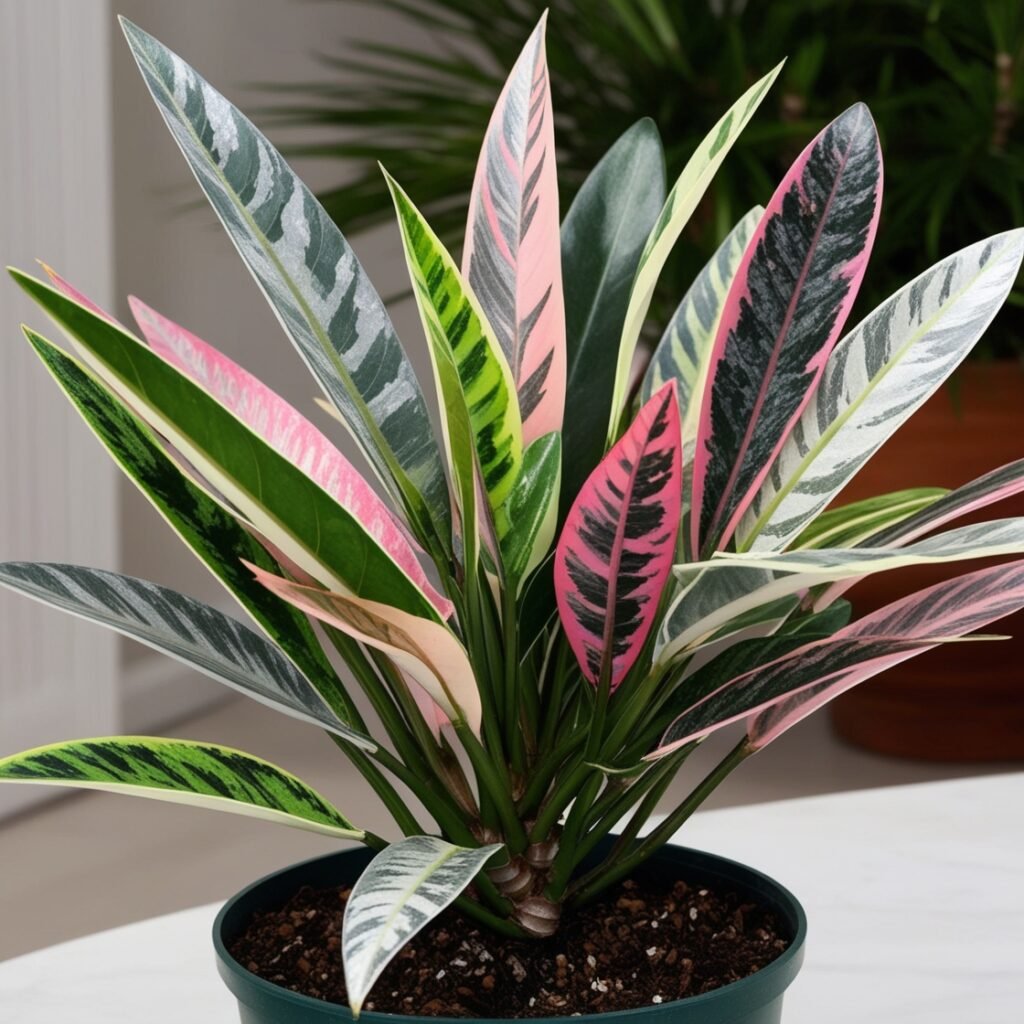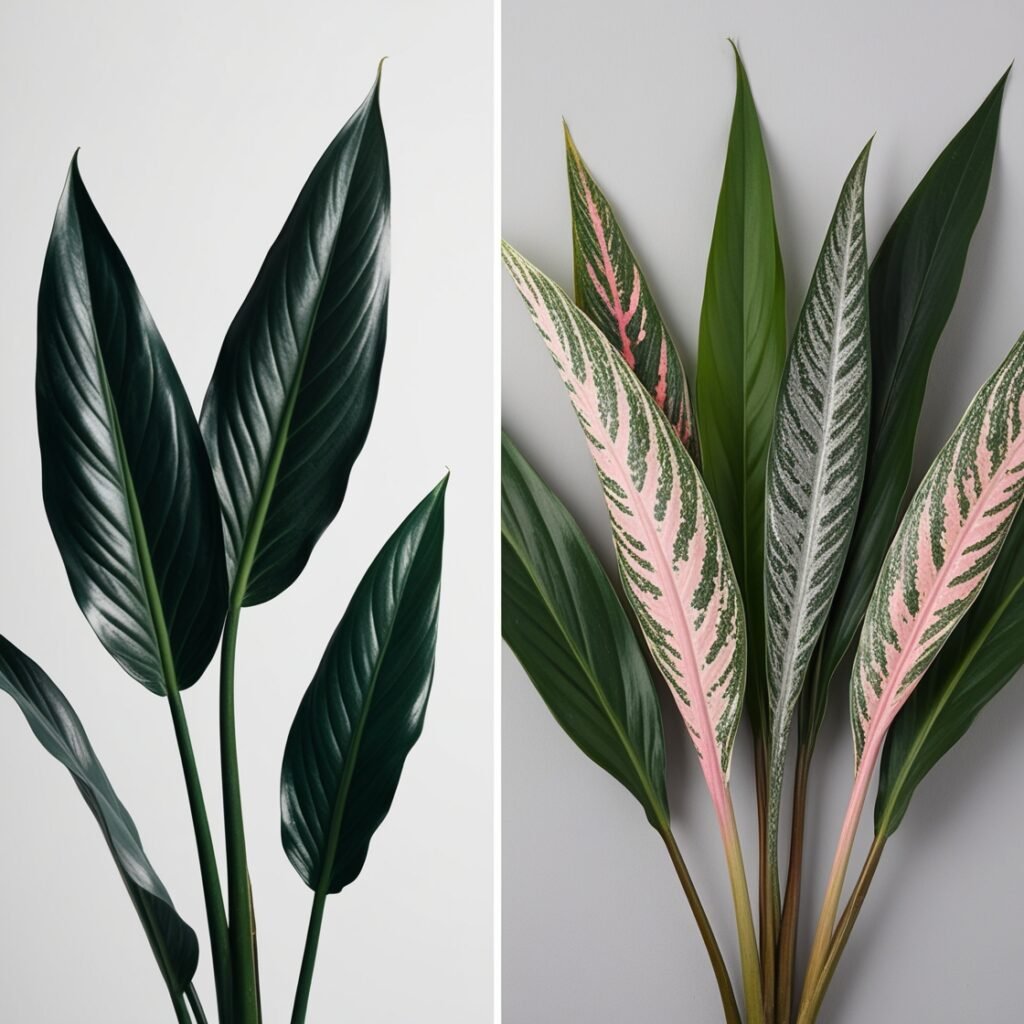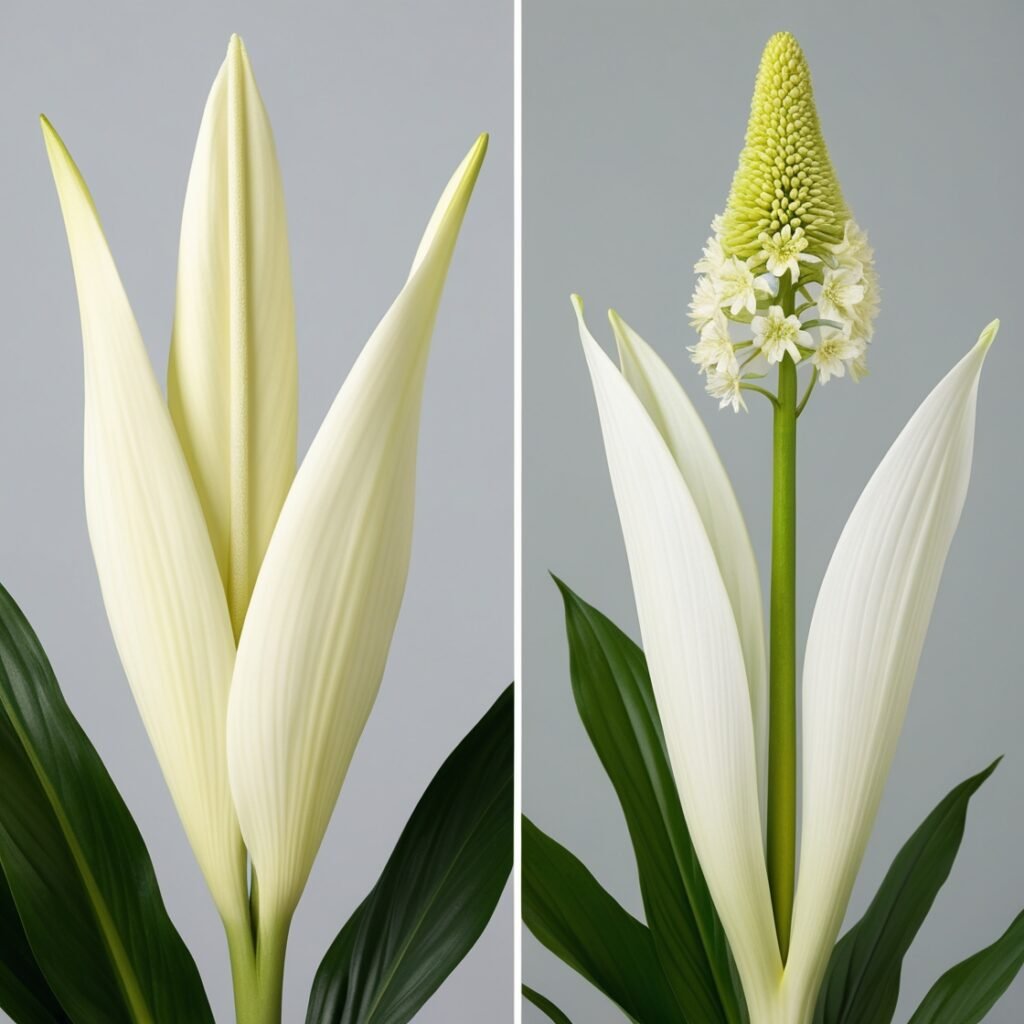
Among the most popular types of plants for plant enthusiasts are the peace lily and Chinese evergreen when it comes to indoor plants. Their beauty combined with low-care functionality makes them the perfect plant for house and office decor. We should know the difference between a peace lily and a chinese evergreen.
As exotic as they may look, both are fairly easy to grow with some very similar benefits and care, all though these two fall into completely different categories from their appearance down to the flowers.
Today, we are going to account for the brand new buyer question, Peace Lily vs. Chinese Evergreen. How to tell the difference by way of figuring out their flowering and leaf sorts in addition to their rising situations once care is taken as a whole. Either to decide on one for your room or just curious about houseplants, this guide will allow you to gain an insight into their specialty.
An overview of Peace Lily Review
The Peace Lily is a tropical plant, and its origin lies in Central America and South American forests. With its elegant white flowers and glossy green leaves, it is a popular decorative plant for many interiors. It is a houseplant that does great in low-light environments, and being easy to take care of are popular office plants.
Standout Features of Peace Lily

Knowing the features of peace lilies is important because we have to understand the key terms of these flowers. Let’s know!
- Blooms
The Peace Lily is capable of producing lovely white flowers that appear to be a hood or spathe covering the central spike. Flowers generally last a long time and can bloom up to 12 months out of the year, with full blooming typically occurring in the spring.
Crisp green, glossy leaves with pointed tips. They have wide, regal leaves that rise up from the ground to near-chest height.
- Height
Depending on the variety, peace lilies grow to be between 1 and 3 feet in height, ideal for small spaces or large rooms.
- Toxicity
These are toxic both to household pets and humans because when they ingest this plant, the calcium oxalate crystals can cause immediate discomfort.
Chinese Evergreen Overview
The overview of Chinese evergreen needs to be discussed for getting more information about these plants.
Chinese Evergreen: Chinese evergreen is one of the most colorful and easiest houseplants on this list. The lucky bamboo, utilized for indoor use thanks to their ability to grow well in the lighting conditions necessary for many and thrive indoors, is actually a very tropical plant that originated from the larger regions of Asia.
There are many types of Chinese evergreens; they can be green, silver-red, or pink, so if you give them proper care, that plant will make your room special!
Flowers: The Chinese Evergreen also flowers, but these are usually less vivid than those of the Peace Lily. The flowers are otherwise small, greenish-white with a spathe and spadix similar to that of the Peace Lily. On the other hand, they are not so pretty to look at and can be cut off from time to time in order for the plant’s energy resources.
Chinese Evergreen leaves are one of a kind, long, thin, and in all sorts of patterns depending on the particular variety. Variegated foliage with silver, pink, or cream streaks and splashes is common to many types.
Size: Chinese Evergreens tend to be smaller than Peace Lilies, growing up to 2 feet high, while some larger varieties may grow over 3 feet.
Toxicity: The Chinese Evergreen is toxic to pets and humans if ingested due to calcium oxalate crystals inside.
Fake Flowers: When do Peace Lilies and Chinese Evergreens Diverge?

Therefore, even though both plants produce flowers, the blooms from a Peace Lily are much more flamboyant and noticeable than those of a Chinese Evergreen. Let’s see!
Peace Lily Flowers:
A flower of the Peace Lily is made up of a white or cream-colored spathe, similar to petals that wrap around a central spike called a spadix that has tiny flowers.
The single spathe is greater and also bolder as compared to the Chinese Evergreen’s, providing this plant a particular ”hood or flag shape”.
The blooms of the peace lily are long-lasting in nature and can stay for weeks, making them more appealing.
Chinese Evergreen Flowers:
The flowers on Chinese Evergreen are not very showy, and they tend to be rather small. They are also made up of a spathe and spadix, but the spathe is almost always green or light colored.
The flowers of this group are less interesting and inconspicuous on the plant. Most owners remove them in order to encourage the plant energy into creating healthy leaves.
True flowers are hidden beneath the leaves and not what the plant is known for being grown.
Key Difference:
The Peace Lily is also known as a common houseplant with flowers that are more showy and visible. The Chinese Evergreen, by comparison, is primarily grown for its foliage, with the flowers being a secondary or minor feature.
Comparison of Peace Lily and Chinese Evergreen Leaves
In addition to flowers, the leaves of Peace Lily and Chinese Evergreen look quite different from one another as well.
Peace Lily Leaves
Peace Lily leaves are dark green and shiny, with a pointed tip. They rise up from the base of the plant and arch perfectly, with a very minimalist shape. Their leaves have a smooth texture and are often unvarnished.
Chinese Evergreen Leaves
The Chinese Evergreen displays variegated leaves, which have green variations on the different shades ranging to silver and higher in varieties with pink, red, or cream streaks. The leaves are also long and thin, but with more of a full, patterned leaf than the Peace Lily.
Some of the various types produce a better color, so they can be chosen by anyone who needs to give their indoor spaces some brightness.
Key Difference:

The Peace Lily comes with large dark green leaves, and the Chinese Evergreen offers a variety of colors, which helps in adding an aesthetic look to it through its foliage.
Proper caring techniques for amazing growth
If you can maintain the overall caring processes properly, you will be able to achieve the highest benefits from these plants. Let’s know the details!
- Light Requirements
Low to moderate indirect light With a low-light tolerance, this flower is excellent for rooms where natural light may be somewhat scarce. Nevertheless, place the plant in a bright spot, as it will produce more flowers when grown under indirect sun.
Chinese Evergreen: Grows in low to moderate light situations, but will tolerate even lower. A few of the variegated varieties require more light to be able to keep their bright colors; however, direct sunlight can scorch leaves.
- Watering
Peace Lilly: Naturally likes its soil on the damper side but not waterlogged. They begin to wilt when they are thirsty, which he will be able to tell you needs watering. They usually require watering when the top inch of soil is dry.
My favorite is the Chinese Evergreen, which can survive extended periods without watering. They like a little drying out between waterings. Root rot can occur from overwatering, so it is important to ensure the plant does not sit in saturated soil.
- Temperature and Humidity
Peace Lily Peace Lilies grow in warm and humid climates. Optimum temperatures are between 65°F and 80°F. They like a lot of humidity, so spritzing the leaves or getting a humidifier nearby can help.
Chinese Evergreen: Chinese Evergreens also like similar warm temperature ranges (16°C to 24°C) and moderate humidity. They have a little more flexibility with drier air than Peace Lilies, but not much.
- Fertilization
Peace Lily: In general, peace lilies do well with monthly feedings through the spring and summer. This plant is happy with just a standard balanced houseplant fertilizer.
The fertilization of Chinese Evergreens: Feed your Chinese Evergreens with a balanced water-soluble fertilizer every 6–8 weeks during their growing season. They are lower maintenance than Peace Lilies.
Which Plant is Right for You?
The Peace Lily as well is a great indoor plant, but with different characteristics. The same goes for Chinese Evergreen. So from artificial ones, it is difficult to figure out the best suitable plant based on your space.
You can choose a Peace Lily if
The flowers are very ornamental, and if you choose an Araberto has obtained yellow daisies that leaf throughout the small one can start to see the blooms aren’t equal in size from year-to-year with this variety.
Peace Lilies: This plant will tolerate less light and still flower, so you can use it in low-light indoor spaces.
Or perhaps you want that timeless, sophisticated plant with simple green leaves.
On the other hand, you can choose the Chinese Evergreen if:
Variegated Leaves Rather than flowers, you like color and variegation in leaves.
For this, you will require a plant that is harder and can survive under low light conditions as well. You need a variety of leaf shades and patterns that will fit your home.
Conclusion
The Peace Lily and Chinese Evergreen have a lot in common as they are both low-light, easy-to-care-for houseplants compared to many other choices on the market. But they look entirely different.
Moreover, it is the best for showy, long-lasting flowers, while Chinese evergreen would do great with colorful or variegated foliage, which makes it perfect for those who want to add a little more color in their home office. In the end, both plants are great options based on your needs and requirements.

